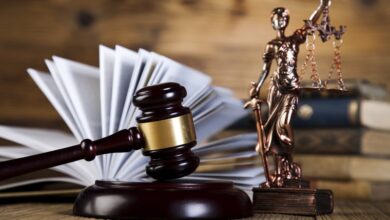Proving Negligence in Personal Injury Claims Involving Car Accidents
An individual who has been injured in any sort of accident that involves another will likely be looking into how they can prove that the other person is at fault. Referred to as “liability,” trying to determine who is at fault can be complicated. What it usually comes down to is deciding whether the other party or even you were negligent.

What Is Negligence?
“Negligence” is a term used by the personal injury attorneys at RussellWorthSolicitors to describe someone who has behaved thoughtlessly, carelessly or recklessly. This person’s poor actions resulted in harm or injury to another individual.
- Negligence can be caused by something that someone did (i.e. running a red light)
- Negligence can be caused by something an individual didn’t do (i.e. failure to stop at a stop sign)

Proving Negligence and Legal Liability in a Car Accident
Injured parties have the burden of proving that one or more individuals were negligent in order to receive compensation for any damages they have incurred. This involves four key elements:
- Established Duty of Care: The law requires that everyone on the road – whether in a vehicle, as a pedestrian, and even as a passenger – be reasonably careful.
- The Defendant Breached Duty of Care: The injured party must then prove that the defendant was not careful or “breached” the duty of care. A party may have breached their duty of care if:

- They failed to stop at a stop light
- They failed to follow a vehicle ahead from a safe distance
- They failed to watch for pedestrians crossing at a cross-walk
The question that one has to ask themselves is, “How would a reasonable person have reacted or behaved in a similar circumstance?” If an individual has not reacted in a reasonable and prudent manner, then it is likely that they have breached the duty of care.

- The Defendant Caused Your Injuries: The next step in the process is proving that the defendant’s actions (or lack of action) resulted in your injury. A common example would be an individual being rear ended by another driver. The plaintiff must prove that it was the hit to the back of his or her car that resulted in whiplash injuries and not another event.
- The Plaintiff Has Suffered Losses: Individuals who are injured in a vehicular accident are entitled to compensation for their injuries. This compensation may include:

- Pain and suffering
- Medical bills
- Lost wages/earning capacity
- Property damage
If a plaintiff has not suffered any monetary damages, then there is no compensation to be recovered.

The Duties of All Drivers in the UK
Every time we sit behind the wheel of a vehicle, we’re instantly taking on a number of important responsibilities. This is to ensure both our safety and the safety of everyone around us.
- Drive at a Reasonable Speed: “Reasonable” may not always mean at the “speed limit.” Bear in mind that there may be times in which driving at 30 miles an hour could be considered negligent (i.e. poor visibility, poor road conditions, etc.).
- Stay Alert: Drivers must remain vigilant and be aware of pedestrians, other vehicles and potential or real road hazards.
- Maintain Your Vehicle: Each driver must keep their vehicle in safe and proper working order, such as ensuring that the headlights and brakes are functioning properly.

